Yesterday I visited a great crypto exhibition hosted by the German Armed Forces in Feldafing near Munich. I saw many interesting cipher exhibits, as well as a photograph of an encryption machine I had never heard of before. Can a reader help to find out more about this device?
In recent years several crypto history enthusiasts have told me about the “Lehrsammlung Nachrichten-, Fernmelde- u. Informationstechnik” (“Teaching collection about telecommunication and information technology”). Hosted by the German Armed Forces (Bundeswehr) this exhibition is located in Feldafing near Munich. To learn more about it check the exhibition’s Facebook site.
Yesterday, I finally had the chance to visit this teaching collection. Wolfgang Schmidt, a Bundeswehr Captain, and volunteer Manfred Kienzle gave me a great guided tour.
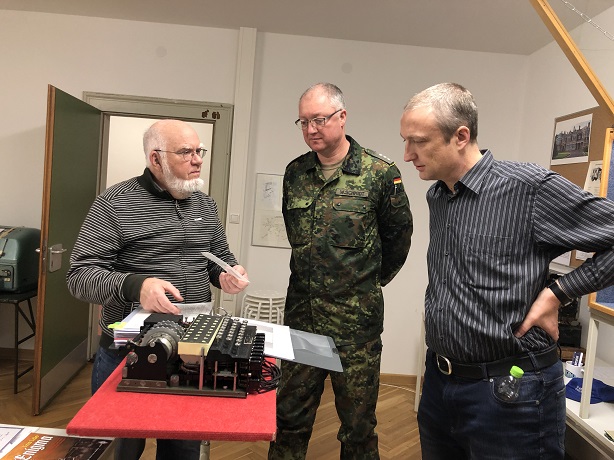
Source: Schmeh
Among other things, I saw this Wehrmacht Enigma …
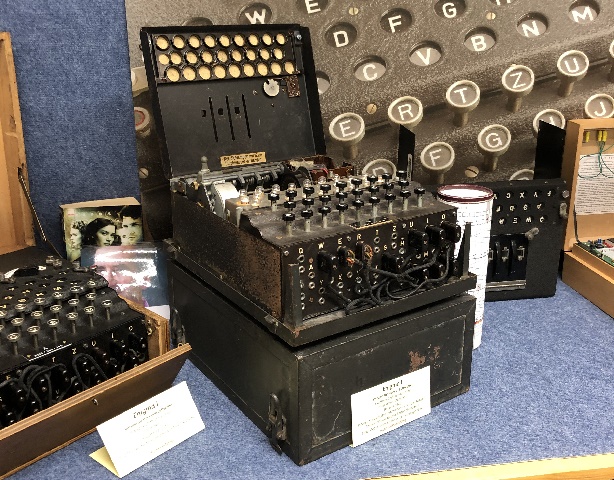
Source: Schmeh
…, along with three other Enigmas. The following exhibit is much smaller, but also quite interesting: A collection picture from a cigaret box showing an Enigma:
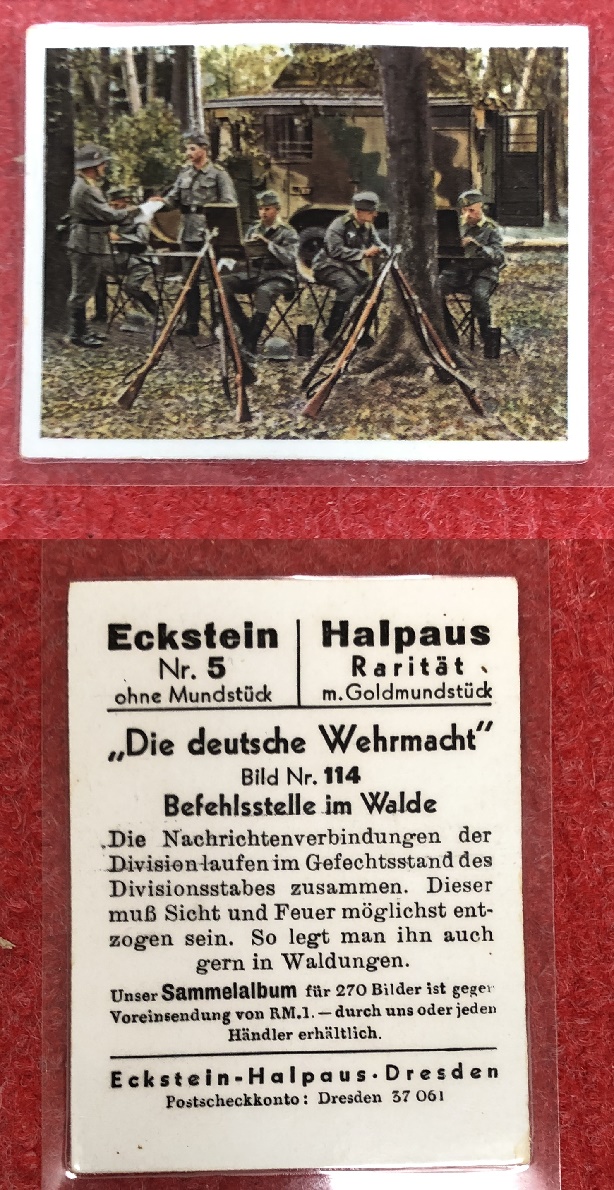
Source: Schmeh
In my view the most valuable item of the collection is a Siemens T52 (Geheimschreiber):
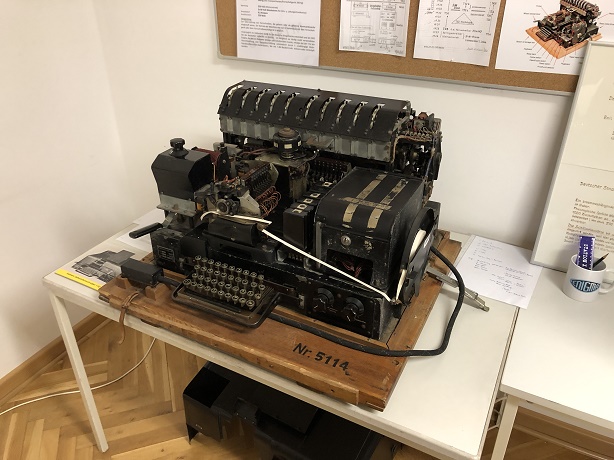
Source: Schmeh
Here’s a KL7, a rotor encryption machine used by NATO countries during the early Cold War:
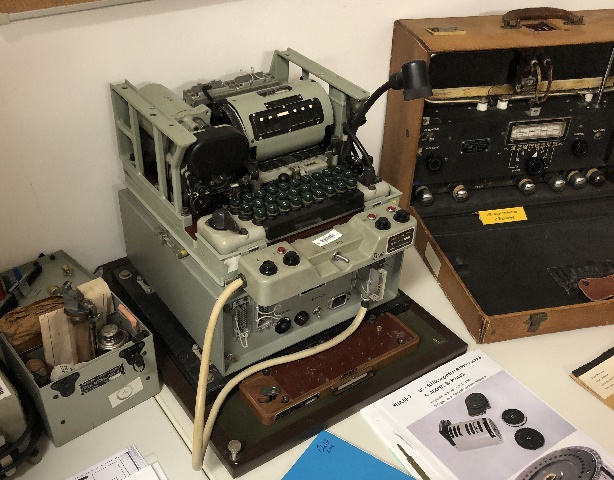
Source: Schmeh
When I look at such a collection, I am always especially interested in the low-tech encryption devices on display (devices of this kind are usually less known and less documented than the more sophisticated cipher tools). The following device is an M-138, a typical low-tech design. It was used by the US Army for low-grade encryption in the 1930s. Considering that this tool was cheap to produce, compact, and easy to carry, it served its purpose quite well.
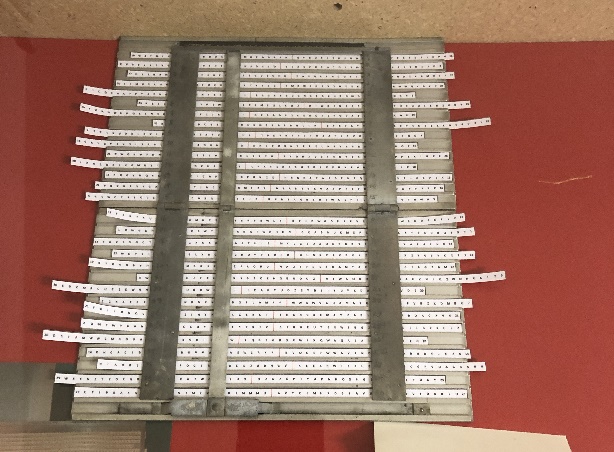
Source: Schmeh
In addition to the crypto material on exhibit, Mr. Kienzle showed me a picture of a British cipher machine named RM-26. I had never seen this device before. For copyright reasons, I can’t show this photograph here, but it is available on Spiegel Online. Apparently, this machine was constructed during the Second World War by renowned cryptologist and Enigma-breaker Gordon Welchman. The picture must have been taken at a GCHQ exhibition (the GCHQ is a British intelligence and information security authority headquartered in Cheltenham).
The Spiegel Online caption says that the RM-26 was made to simulate the Enigma, but this is certainly not correct. According to the description given on the label besides the machine, the RM-26 was an advanced rotor machine meant to supersede the Typex …
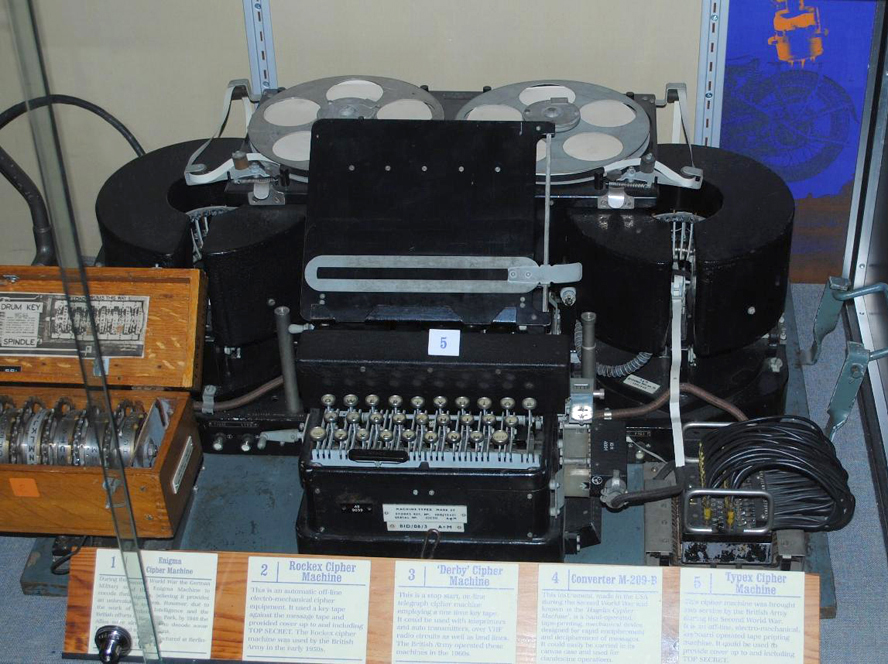
Source: Schmeh
… , which was a pretty good rotor machine itself. Apparently, the RM-26 copy shown on the Spiegel Online picture was only a prototype, and the machine never made it to serial production. There are many different ways a rotor encryption machines can be constructed. Especially, the rotor movement, which should be as unregular as possible, may follow different design concepts. I’m sure that Gordon Welchman, who was an excellent mathematician, came up with some interesting new ideas. So, I certainly would like to know more about this machine.
Can a reader tell me more about the RM-26?
Edited to add:
Frode Weierud, a Norwegian Enigma and cipher machine expert, has told me that an RM-26 was on display at the Bletchley Park Reunion in 2009. Frode provided me two photographs he took there. I attended this event, too. So, when I checked the pictures I took back in 2009, I found one of the RM-26.
Here are Frode’s photographs:
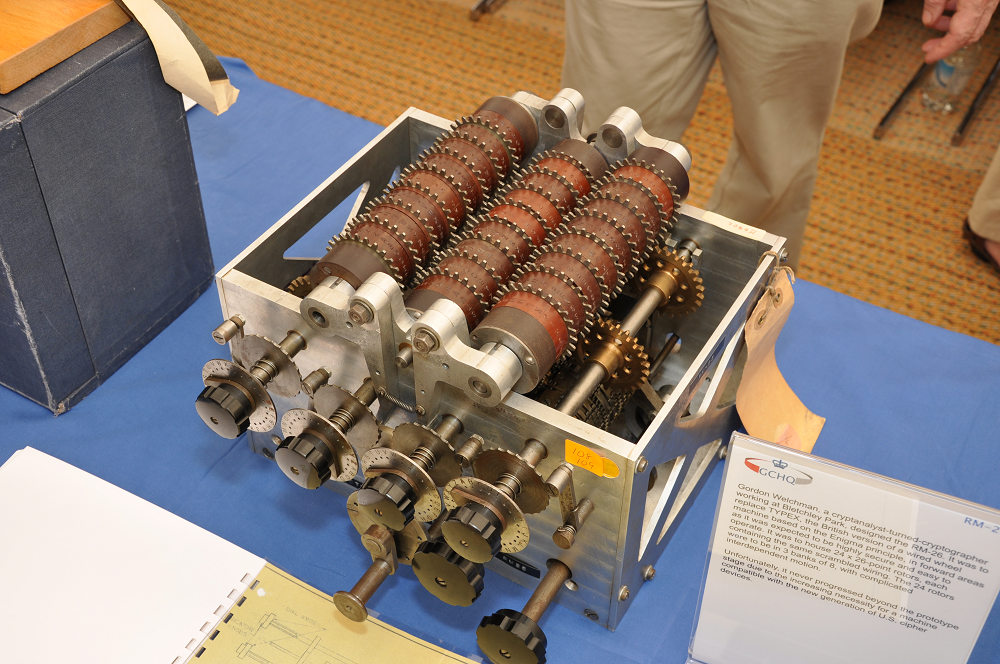
Source: Frode Weierud
Frode wrote: “You can see the 24 rotors at the very top of the machines in 3 banks of eight. You can see that they are engraved with the alphabet from A-Z. How the rotors were interconnected is not clear, probably in series and there is no reflector so there has to be a way of switching the machine from encipher to decipher. Also all the rotors are having exactly the same wiring, which is another odd thing about this machine.”
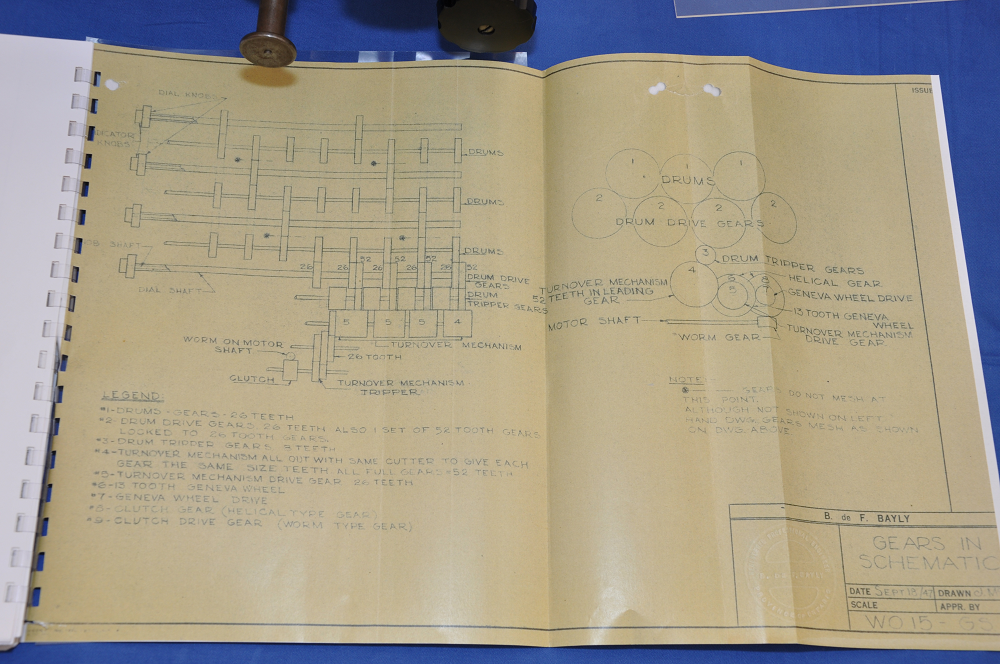
Source: Frode Weierud
Frode wrote: “As you can see from the photo of the drawing it was Benjamin deForest Bayly, the inventor of Rockex [a British One time Pad encryption machine], who was in charge of building the prototype of Welchman’s machine. The drawing is dated 18 September 1947.”

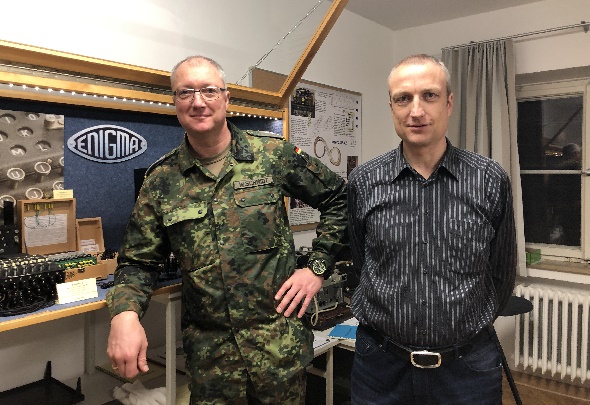

Kommentare (5)